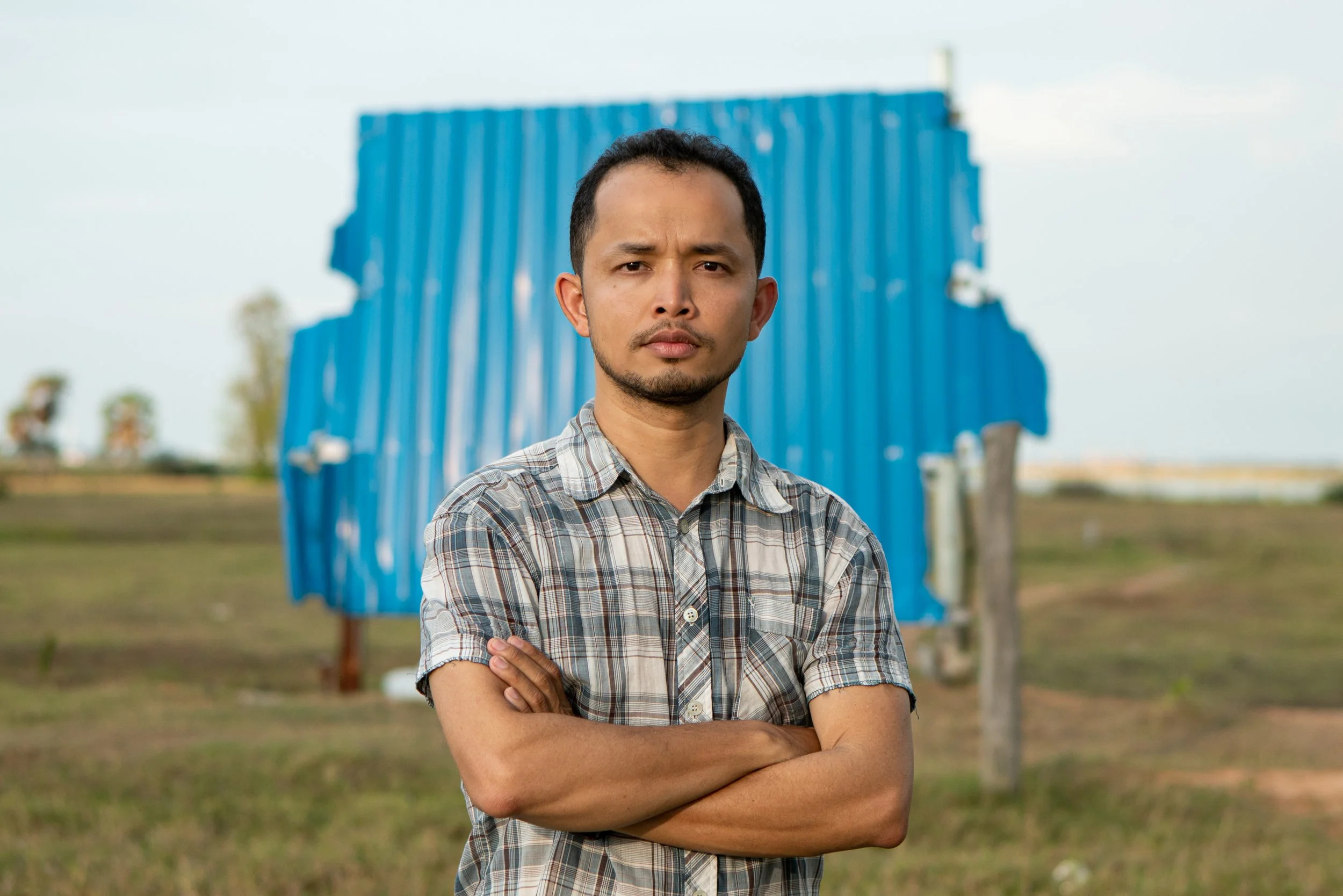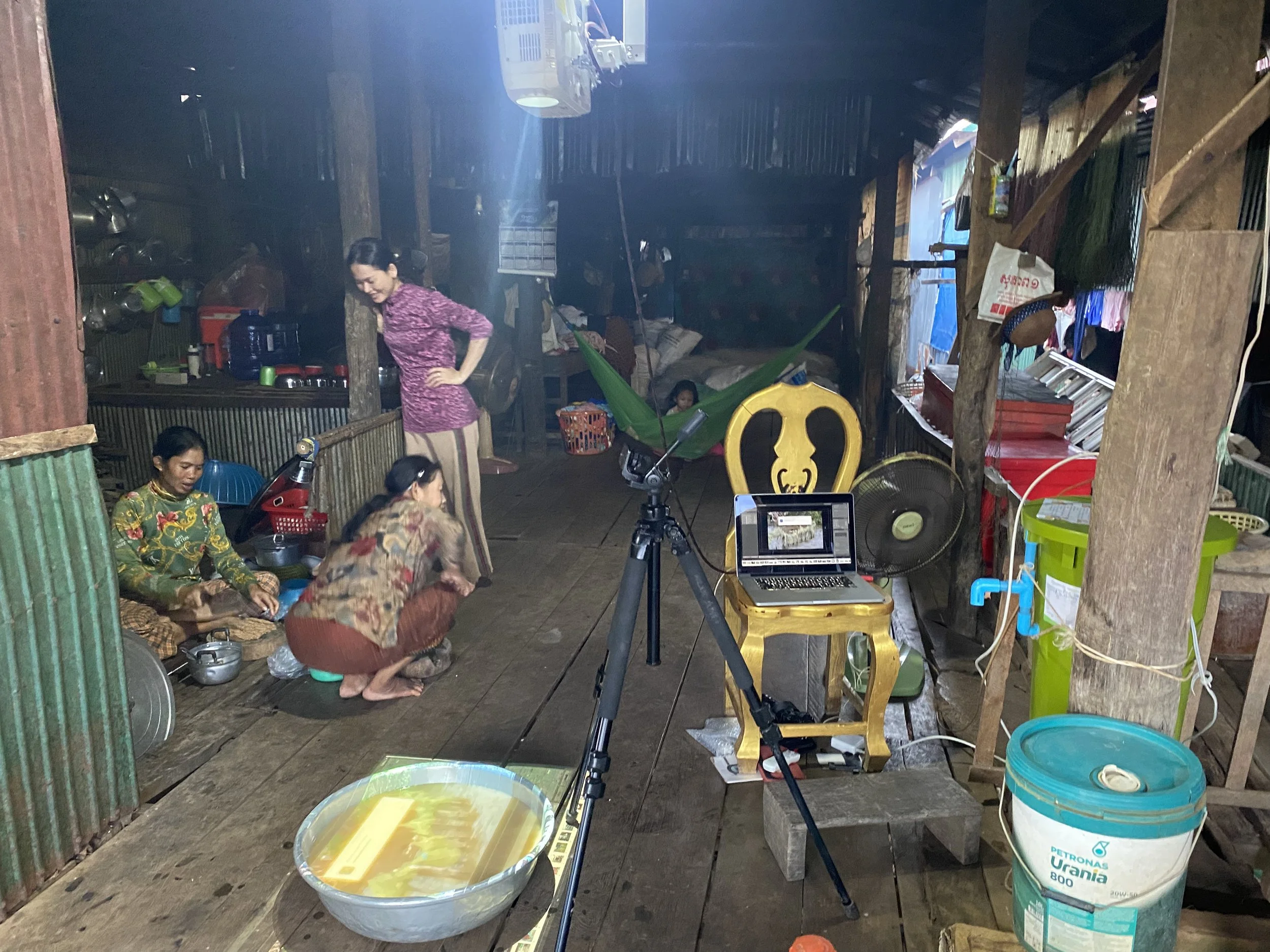A Day in the Life: Lim Sokchanlina
Documenting the Tonlé Sap Lake in Cambodia
A Day in the Life is a series by A&M where we invite artists to share a day in their life through images accompanied by brief descriptions.
Lim Sokchanlina. Photo by Hean Rangsey.
Lim Sokchanlina is an artist whose body of work primarily comprises documentary photography and film. Based in Phnom Penh, his practice focuses on Cambodia’s landscape as a means of bringing light to the country's social, political, economic, and environmental changes. Through his visual narratives, Sokchanlina seeks to uncover the complexities of these issues and highlight their impact on local communities and broader societal structures.
In this A Day in the Life feature, he shares the inspiration and research behind his latest photo series, The Water Element: Tonlé Sap Lake is Floating. It captures the daily lives of villagers residing near Tonlé Sap Lake, who rely on its water for their livelihood, despite its poor quality.
Lim Sokchanlina, The water element: Tonlé Sap Lake is floating, 2024, archival paper, Hahnemuhle photo rag 308g mount on aluminum (cut to the shape), 70 x 70cm. Image courtesy of the artist.
The Water Element: Tonlé Sap Lake is Floating is an artwork series produced from a reproduction of an image projected directly onto water. The water is contained in a bucket, used daily by the local villagers in Kompong Phluk, a floating village on Tonlé Sap Lake in Siem Reap province, Cambodia.
Installation view of Lim’s solo exhibition, The Water Element: Tonlé Sap Lake is Floating, at NCA Nichido Gallery, Tokyo. Photo by Kei Ookano. Image courtesy of Lim Sokchanlina.
For this exhibition at NCA Nichido Contemporary Gallery, Tokyo, a series of photographic prints are mounted on aluminium and laser-cut into the shape of containers. There are various images printed. The exhibition also features two installation works with sound, including a video projection on the water container and a daily life documentation slideshow projected onto the bucket of water. The works highlight how closely the villagers live with and depend on water, despite the poor water quality. For centuries, people could not drink water directly from the lake, and they did not have access to clean water until recently. I am fascinated by the resilience of the people adapting to an unbalanced life and climate change.
Research and photographic documentation of life and water in Kompong Phluk, Tonlé Sap Lake Village. Image courtesy of Lim Sokchanlina.
I have taken many trips for my research and photographic documentation of life and water in Kompong Phluk, Tonlé Sap Lake Village over the years. People have lived for generations in these stilt houses along this canal. It is the only important waterway connecting the people of this village to Tonlé Sap Lake.
Tonlé Sap Lake water in different containers for daily use, except cooking. Image courtesy of Lim Sokchanlina.
For centuries, people have lived and depended on Tonlé Sap Lake water. They pump, store, and contain the water in these types of containers, letting it rest until the particles and dirt settle to the bottom. Sometimes, they use chlorine to clean and disinfect the water. People use this water daily, except for cooking.
Creating artwork and production at a villager's house in Kompong Phluk Village, Tonlé Sap Lake. Photo taken in February 2024. Image courtesy of Lim Sokchanlina.
I have known this family in Kompong Phluk village since 2011, when I was making my first artwork about Tonlé Sap Lake. I established a close relationship with them and have continued visiting and researching until now. During the production of this new work, The Water Element: Tonlé Sap Lake is Floating, I created a photo series and completed the production at this house last year.
Follow Lim Sokchanlina on Instagram here and visit his website to see more of his works.






